http://www.rhci-online.net/radiogram/radiogram.htm
RSID: <<2019-11-10T01:30Z MFSK-64 @ 5960000+1500>>
http://www.rhci-online.net/radiogram/radiogram.htm
RSID: <<2019-11-10T01:30Z MFSK-64 @ 5960000+1500>>
Mary Travers of Peter, Paul & Mary was born November 9, 1936.
She died in 2009.
Sending Pic:194x244;
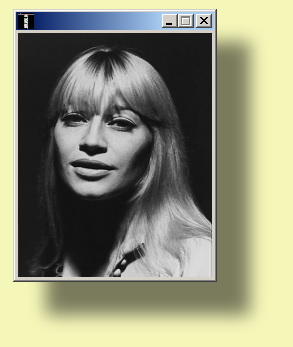
marytravers.com
peterpaulandmary.com
Please report your decode to
themightykbc@gmail.com
|
via SWRG-fb-group / Al Holt: "....BTW, there are some excellent P,P&M videos on YT recorded on BBC during the 60's. https://youtu.be/Ld6fAO4idaI |
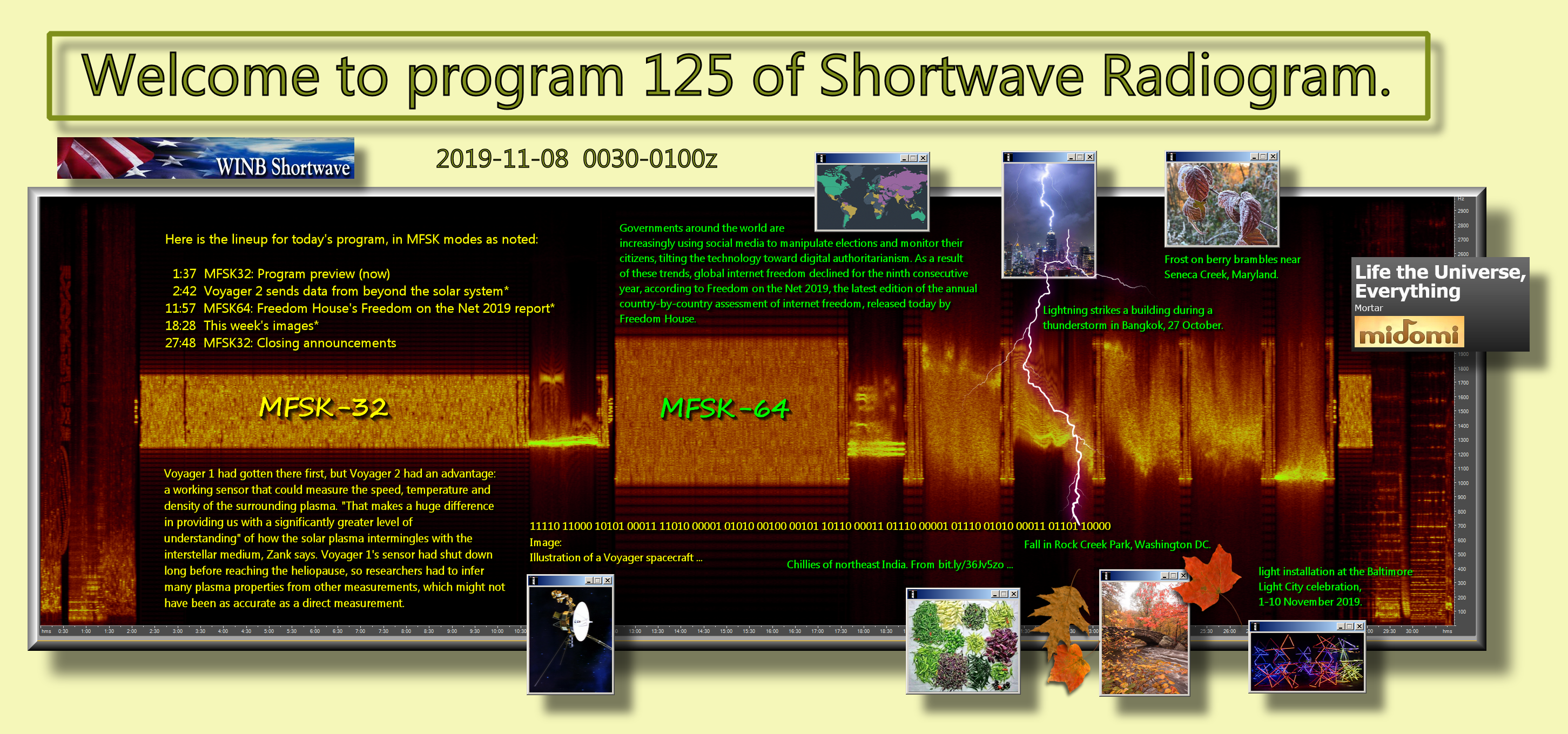
RSID: <<2019-11-08T00:31Z MFSK-32 @ 9265000+1500>>
Welcome to program 125 of Shortwave Radiogram.
I'm Kim Andrew Elliott in Arlington, Virginia USA.
Here is the lineup for today's program, in MFSK modes as noted:
1:37 MFSK32: Program preview (now)
2:42 Voyager 2 sends data from beyond the solar system*
11:57 MFSK64: Freedom House's Freedom on the Net 2019 report*
18:28 This week's images*
27:48 MFSK32: Closing announcements
* with image(s)
Please send reception reports to radiogram@verizon.net
And visit http://swradiogram.net
Twitter:
@SWRadiogram
From Science News:
Voyager 2 reveals the dynamic, complex nature of the solar system’s edge
Christopher Crockett
4 November 2019
Humanity's second ambassador to interstellar space has reported
back from the frontiers of the solar system — with the message
that the border of the sun's territory is a complex and
ever-changing place.
Late last year, NASA's Voyager 2 spacecraft broke through the
heliopause, the boundary where the solar wind gives way to the
plasma that permeates the galaxy. Six years earlier, its sister
probe, Voyager 1, made its own heliopause crossing. Now, the
combined results of these two journeys, published online November
4 in several papers in Nature Astronomy, offer the most detailed
look yet at this largely unexplored region of space.
These two robotic explorers "are taking humankind to astonishing
new places that 60 years ago we never imagined doing," says Gary
Zank, a space physicist at the University of Alabama in
Huntsville who was not involved with this research.
The view outside Voyager 2's window changed on November 5, 2018,
when the craft was about 17.8 billion kilometers from the sun —
119 times farther away than Earth — and the density of the
surrounding plasma jumped by about a factor of 20. The steady
stream of low-energy atomic particles from the sun dropped away,
replaced by a barrage of far more energetic particles known as
cosmic rays. These changes told researchers that Voyager 2 had
left the sun's protective magnetic bubble, 42 years after
beginning its sight-seeing expedition across the solar system.
"It's been a wonderful journey," mission lead Edward Stone, a
planetary scientist at Caltech, said at an Oct. 31 news
conference on the findings.
Voyager 1 had gotten there first, but Voyager 2 had an advantage:
a working sensor that could measure the speed, temperature and
density of the surrounding plasma. "That makes a huge difference
in providing us with a significantly greater level of
understanding" of how the solar plasma intermingles with the
interstellar medium, Zank says. Voyager 1's sensor had shut down
long before reaching the heliopause, so researchers had to infer
many plasma properties from other measurements, which might not
have been as accurate as a direct measurement.
Despite encountering the heliopause at different times and
locations — the two spacecraft are farther from each other than
each are from the sun — some things looked similar. The magnetic
field looked pretty much the same on the inside and the outside
of the boundary: Somehow, the sun's magnetic field lines up
nearly perfectly with the local galactic field, contrary to
expectations. "We could dismiss that as coincidence in one case,
but we can't do that twice," study coauthor Leonard Burlaga, of
NASA's Goddard Space Flight Center in Greenbelt, Md., said in the
news conference.
There were notable differences in the two crossings as well.
Voyager 1 sailed through a largely stagnant solar wind for two
years before reaching the heliopause, whereas the stream of solar
particles alongside Voyager 2 was quick and steady right up to
the boundary. Voyager 1 encountered galactic material intruding
into the solar bubble, while Voyager 2 instead witnessed solar
particles leaking far out into interstellar space. "We're seeing
the same beast, but it's behaviorally quite different," Zank
says.
Figuring out what many of these results mean will be challenging:
The probes interrogated two boundary spots separated by nearly 24
billion kilometers. But this boundary is always changing. It
breathes in and out in sync with the sun's 11-year activity
cycle, and eruptions on the sun's surface make their way out to
the heliopause and stir things up. "That complicates all these
stories," Stone said.
New data will have to wait. So far, five spacecraft have made it
(or will make it) this far into space — but the Voyagers are the
only ones sending back reports. Pioneer 10 and 11, launched in
1972 and 1973, stopped working years ago. New Horizons, which
paparazzied Pluto in 2015, recently detected a possible glow of
hydrogen gas at the solar system's edge. But that craft may run
out of power before it reaches the heliopause. In the meantime,
NASA is looking into launching a dedicated interstellar probe as
early as the 2030s.
For now, the Voyagers are humanity's eyes and ears in
interstellar space, and the team estimates that both spacecraft
have about five years of service left. Electrical power comes
from heat generated by a nugget of plutonium, and as the probes
cool, they lose the ability to keep their instruments running.
When asked if he expected the Voyagers to last this long, Stone
replied: "We're certainly surprised."
https://www.sciencenews.org/article/voyager-2-reveals-dynamic-nature-solar-system-edge
Image: Illustration of a Voyager spacecraft ...
Sending Pic:153x195C;
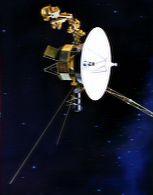
Shortwave Radiogram now changes to MFSK64 ...
RSID: <<2019-11-08T00:41Z
MFSK-64 @
9265000+1500>>
This is Shortwave Radiogram in MFSK64
Please send your reception report to
radiogram@verizon.net
Freedom House press release:
Freedom House releases Freedom on the Net 2019: The Crisis of
Social Media
Governments around the world are increasingly using social media
to manipulate elections and monitor their citizens, tilting the
technology toward digital authoritarianism. As a result of these
trends, global internet freedom declined for the ninth
consecutive year, according to Freedom on the Net 2019, the
latest edition of the annual country-by-country assessment of
internet freedom, released today by Freedom House.
Adding to the problem of meddling by foreign regimes, a new
menace to democracy has risen from within, as populist leaders
and their armies of online supporters seek to distort politics at
home. Domestic election interference marred the online landscape
in 26 of the 30 countries studied that held national votes over
the past year. Disinformation was the most commonly used tactic.
Authorities in some countries blocked websites or cut off access
to the internet in a desperate bid to cling to power.
"Many governments are finding that on social media, propaganda
works better than censorship," said Mike Abramowitz, president of
Freedom House. "Authoritarians and populists around the globe are
exploiting both human nature and computer algorithms to conquer
the ballot box, running roughshod over rules designed to ensure
free and fair elections."
Governments from across the democratic spectrum are
indiscriminately monitoring citizens' online behavior to identify
perceived threats—and in some cases to silence opposition.
Freedom House has found evidence of advanced social media
surveillance programs in at least 40 of the 65 countries
analyzed.
"Once reserved for the world's most powerful intelligence
agencies, big-data spying tools are making their way around the
world," said Adrian Shahbaz, Freedom House's research director
for technology and democracy. "Advances in AI are driving a
booming, unregulated market for social media surveillance. Even
in countries with considerable safeguards for fundamental
freedoms, there are already reports of abuse."
The proliferation of sophisticated monitoring tools has reduced
people's ability to freely express themselves and be civically
active online. Of the 65 countries assessed in this report, a
record 47 featured arrests of users for political, social, or
religious speech.
"The future of internet freedom rests on our ability to fix
social media," said Shahbaz. "Since these are mainly American
platforms, the United States must be a leader in promoting
transparency and accountability in the digital age. This is the
only way to stop the internet from becoming a Trojan horse for
tyranny and oppression."
Freedom on the Net 2019 assesses internet freedom in 65 countries
that account for 87 percent of internet users worldwide. The
report focuses on developments that occurred between June 2018
and May 2019, though some more recent events are included.
Key Findings:
-- Declines outnumber gains for the ninth consecutive year.
Since June 2018, 33 of the 65 countries assessed in Freedom
onthe Net experienced a deterioration in internet freedom.
Thebiggest score declines took place in Sudan and
Kazakhstan, followed by Brazil, Bangladesh, and Zimbabwe.
Improvements were measured in 16 countries, with Ethiopia
recording the largest gains.
-- Internet freedom declines in the United States. US
law enforcement and immigration agencies increasingly
monitored social media and conducted warrantless searches of
travelers' electronic devices, with little oversight or
transparency. In a number of troubling cases, the monitoring
targeted constitutionally protected activities such as
peaceful protests and newsgathering. Disinformation was again
prevalent around major political events, spread increasingly
by domestic actors.
-- China is the world's worst abuser of internet freedom for
thefourth consecutive year. Censorship reached
unprecedented extremes in China as the government enhanced
its information controls ahead of the 30th anniversary of
the Tiananmen Squaremassacre and in the face of persistent
antigovernment protests in Hong Kong.
-- Digital platforms are the new battleground for democracy.
Domestic state and partisan actors used propaganda and
disinformation to distort the online landscape during
elections in at least 24 countries over the past year,
making it by far the most popular tactic for digital
election interference. Often working in tandem with
government-friendly media personalities and business
magnates, semiautonomous online mobs transmitted conspiracy
theories, inflammatory views, and misleading memes from
marginal echo chambers to the political mainstream.
-- Governments harness big data for social media surveillance.
In at least 40 out of 65 countries, authorities have
instituted advanced social media monitoring programs. These
sophisticated mass surveillance systems can quickly map
users' relationships; assign a meaning to their social media
posts; and infer their past, present, or future locations.
Machine learning enables the programs to find patterns that
may be invisible to humans, and even to identify whole new
categories of patterns for further investigation.
-- Free expression is under assault. A record high of 47 out of
65 countries featured arrests of users for political,
social, or religious speech. Individuals endured physical
violence in retribution for their online activities in at
least 31 countries.
-- Authorities normalize blanket shutdowns as a policy tool.
Social media and communication applications were blocked in
at least 20 countries, and telecommunications networks were
suspended in 17 countries, often in the lead-up to elections
or during protests and civil unrest.
-- More governments enlist bots and fake accounts to manipulate
social media. Political leaders employed individuals to
surreptitiously shape online opinions and harass opponents
in 38 of the 65 countries covered in this report—another new
high.
https://www.freedomonthenet.org/report/freedom-on-the-net/2019/the-crisis-of-social-media/press-release
[Freedom house is a nongovernmental organization that receives
most of its funding from the United States Government.]
Image: Freedom on the Net 2019 map, with not free countries in
purple, partially free in yellow, and free in green ...
Sending Pic:204x120C;
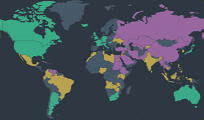
This is Shortwave Radiogram in MFSK64
Please send your reception report to
radiogram@verizon.net
This week's images ...
Chillies of northeast India. From
bit.ly/36Jv5zo ...
Sending Pic:203x169C;

Lightning strikes a building during a thunderstorm in Bangkok, 27
October. From
bit.ly/2PQHD2d ...
Sending Pic:167x209C;
Fall in Rock Creek Park, Washington DC. From
bit.ly/2CieHYW ...
Sending Pic:159x207C;
Frost on berry brambles near Seneca Creek, Maryland. From
bit.ly/2WTgxck ...
Sending Pic:204x152C;
Our art of the week is a light installation at the Baltimore
Light City celebration, 1-10 November 2019. From
prn.to/2pRmKsV
...
Sending Pic:209x107C;
Shortwave Radiogram returns to MFSK32 ...
RSID: <<2019-11-08T00:57Z
MFSK-32 @
9265000+1500>>
This is Shortwave Radiogram in MFSK32 ...
Shortwave Radiogram is transmitted by:
WRMI, Radio Miami International, wrmi.net
and
WINB Shortwave, winb.com
Please send reception reports to
radiogram@verizon.net
And visit http://swradiogram.net
Twitter:
@SWRadiogram or twitter.com/swradiogram
I'm Kim Elliott. Please join us for the next Shortwave
Radiogram.
|
Ending music: https://www.midomi.com/index.php?action=main.track&track_id=100005337608046830&from=voice_searchMortar - Life the Universe, Everything https://youtu.be/AEah_1K40jk
|
http://www.rhci-online.net/radiogram/radiogram.htm
|
QTH: |
D-06193 Petersberg (Germany/Germania) |
|
|
Ant.: |
Dipol for 40m-Band & Boomerang Antenna 11m-Band |
|
|
RX for RF: |
FRG-100B + IF-mixer & ICOM IC-R75 + IF-mixer |
|
|
Software IF: |
con STUDIO1 - Software italiano per SDR [S-AM-USB/LSB] + beta 11 Version 2.80 (August 21, 2018) - for scheduled IF-recording |
|
|
Software AF: |
Fldigi-4.0.18 + flmsg-4.0.7 images-fldigifiles on homedrive.lnk |
|
|
OS: |
German XP-SP3 with support for asian languages |
German W7 32bit + 64bit |
|
PC: |
MEDION Titanium 8008 (since 2003) [ P4 - 2,6 GHz] |
MSI-CR70-2MP345W7 (since2014) [i5 -P3560 ( 2 x 2,6GHz) ] |
http://wiki.radioreference.com/index.php/Decoding_the_SW_Radiogram_Broadcasts
https://www.qsl.net/ve7vv/Files/Digital%20Modes.pdf
RSID: <<2019-11-07T02:20Z
MFSK-64 @
7780000+1500>>

This Is A Music Show #037
31 October 2019
<=== 07 November !!
0100-0200UTC on 5850/5010 kHz
0130-0230UTC on 9395 kHz
via WRMI, Okeechobee USA
** UTC TIME CHANGE STARTING NEXT WEEK**
5850 kHz 0200-0300
7780 kHz 0200-0230 (Backup)
9395 kHz 0230-0300 (Backup)
*Stays at the same time for the Americas (mostly) 9pmET/6pmPT
----------------------------------------
PLAYLIST
|
Jumbo - Saturday |
|
|
Jolanta Borusiewicz - Hej, Dzień Się Budzi
"Jolanta
Borusiewicz -Hey, the day is waking up" |
- - -
|
|
Eric's Trip - Sun Coming Up |
|
|
Little Suzy - Take Me In Your Arms
"Take me in your Arms" was released
by the time she was 13 in 1992" |
|
|
Enoch Light and the Light Brigade - Scarborourgh Fair |
|
|
THIS DATA |
|
|
|
|
Links of note:
Jolanta Borusiewicz - Koncert, Opole 1969
https://www.youtube.com/watch?v=soJML31ytSc
Eric's Trip 1990-1996 documentary
https://vimeo.com/50589228
Void's Bandcamp (Get 83 releases for £1!!)
https://voidvoid.bandcamp.com/album/void
Originally Released by &Options, cassettes available!
https://andoptions.bandcamp.com/album/void
-----
Please send reception reports/comments:
This is A Music Show
PO Box 99060 Galleria
Toronto, ON M6H 0B3
Canada
thisisamusicshow@gmail.com
www.instagram.com/thisisamusicshow/
www.twitter.com/ThisIsAMusicSho/
------
Thanks for listening!
--YOUR HOST--
EOM
Sending Pic:300x300Cp4;

https://www.ndr.de/info/sendungen/NDR-Info-sendet-Heiligabend-Gruss-an-Bord,grussanbord306.html
"....The "Polarstern" on the way to
the Arctic. "Greetings on board" will talk to sailors on the research vessel.
And Professor Antje Boetius, responsible for the expedition, will be a guest.
What would Christmas Eve be without the NDR info broadcast "Greeting on board"? It
is a long tradition of Norddeutscher Rundfunk to greet seafarers on ships around
the world for Christmas. Also this year the NDR sends the messages of the
relatives to officers and teams, which can not be at home. The radio show on NDR
Info starts on December 24th at 8:05 pm - as always with the steamship foghorn
sound from the Port of Hamburg.
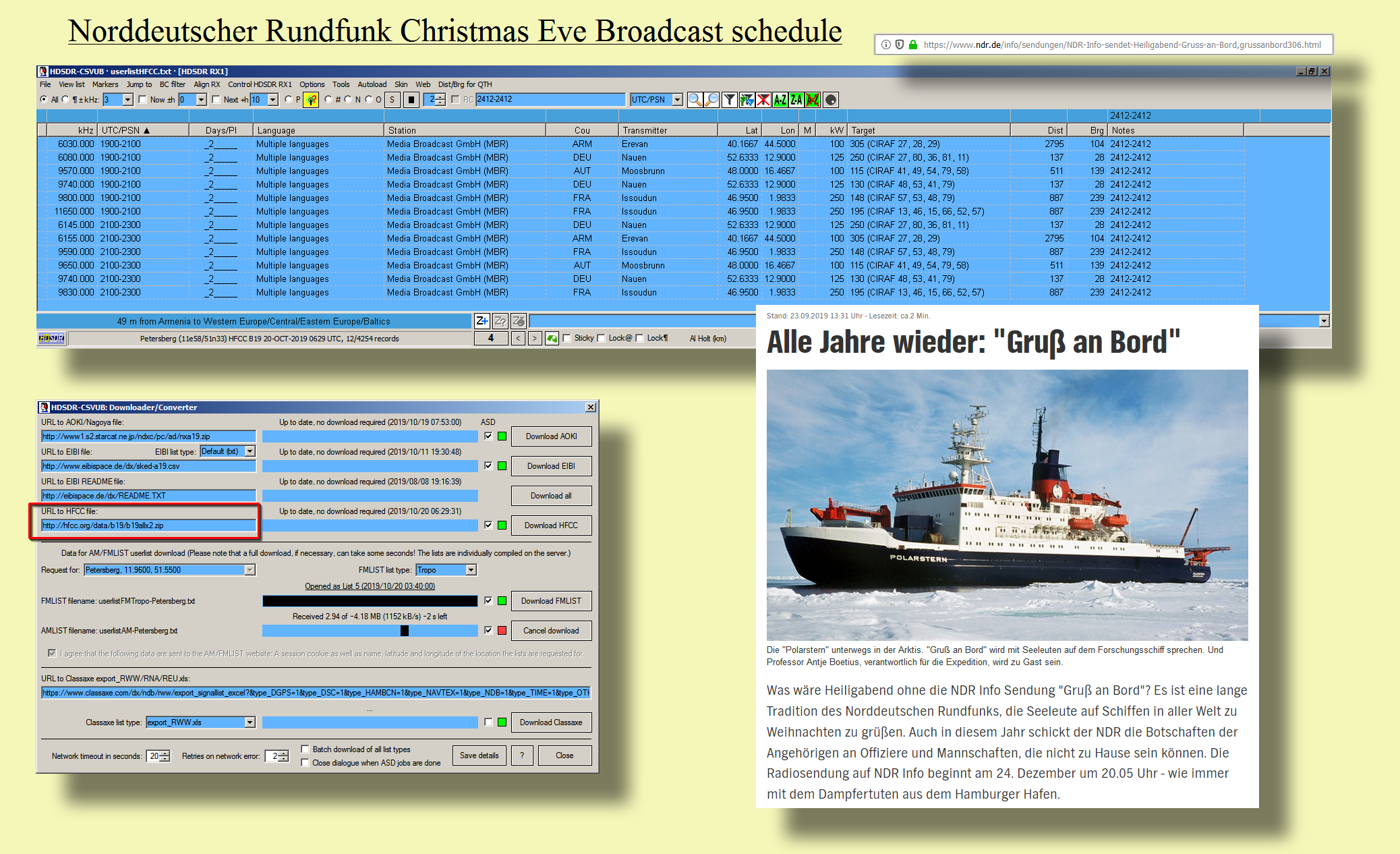
|
|
|
|
Nauen 6080 kHz 1900-2100z + 6145 kHz 2100-2300z ===> 250° Atlantic - North |
|
|
24.12.2019
6030 kHz 1900-2100z
27,28,29
ERV 100 kW
305°
241219 ARM 2018: 6030 kHz 2017: 6010 kHz 9720 kHz 1900-2100z 48,53,41,79 NAU 125 kW 130° 241219 D 2018: 9740 kHz 2017: 9740 kHz 9570 kHz 1900-2100z 41,49,54,79,58 MOS 100 kW 115° 241219 AUT 2018: 9570 kHz 2017: 9790 kHz 9800 kHz 1900-2100z 57,53,48,79 ISS 250 kW 148° 241219 F 2018: 9800 kHz 2017: 9800 kHz 11650 kHz 1900-2100z 13,46,15,66,52,57 ISS 250 kW 195° 241219 F 2018: 11650 kHz 2017: 11650 kHz
6145 kHz 2100-2300z 27,80,36,81,11 NAU 125 kW 250° 241219 D 2018: 6145 kHz 2017: 5930 kHz 6155 kHz 2100-2300z 27,28,29 ERV 100 kW 305° 241219 ARM 2018: 6155 kHz 2017: 6155 kHz
9590 kHz 2100-2300z
57,53,48,79
ISS 250 kW 148°
241219 F 2018: 9590 kHz 2017:
9590 kHz
9720 kHz 2100-2300z
48,53,41,79
NAU 125 kW 130°
241219 D 2018: 9720 kHz 2017: 9765 kHz
https://www.radioeins.de/programm/sendungen/medienmagazin/radio_news/beitraege/2015/ndr_kw.html |
|
|
|
|
|
|
|
|
Issoudun 11650 kHz 1900-2100z + 9830 kHz 2100-2300z ===> 195° Atlantic - South |
Issoudun 9800 kHz 1900-2100z + 9590 kHz 2100-2300z ===> 148° Atlantic / Indian Ocean (South Africa) |
|
|
|
|
|
|
|
Nauen 9720 kHz 1900-2100z + 9720 kHz 2100-2300z ===> 130° Indian Ocean - West |
Moosbrunn 9570 kHz 1900-2100z + 9675 kHz 2100-2300z ===> 115° Indian Ocean - East |
|
|
|
|
Noratus 6030 kHz 1900-2100z Europe + 6155 kHz 2100-2300z Europe + Parts of North America ===> 305°
|
|